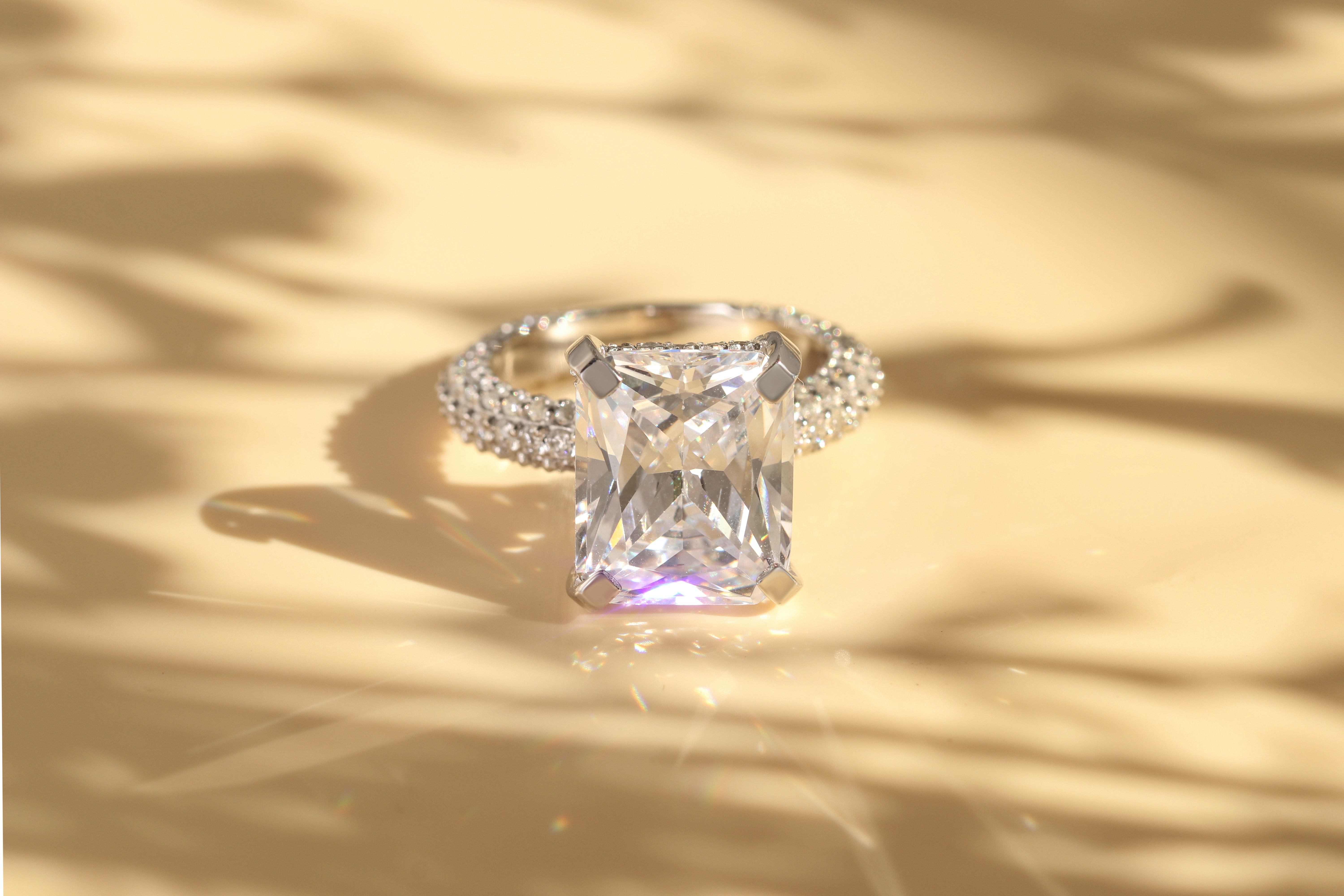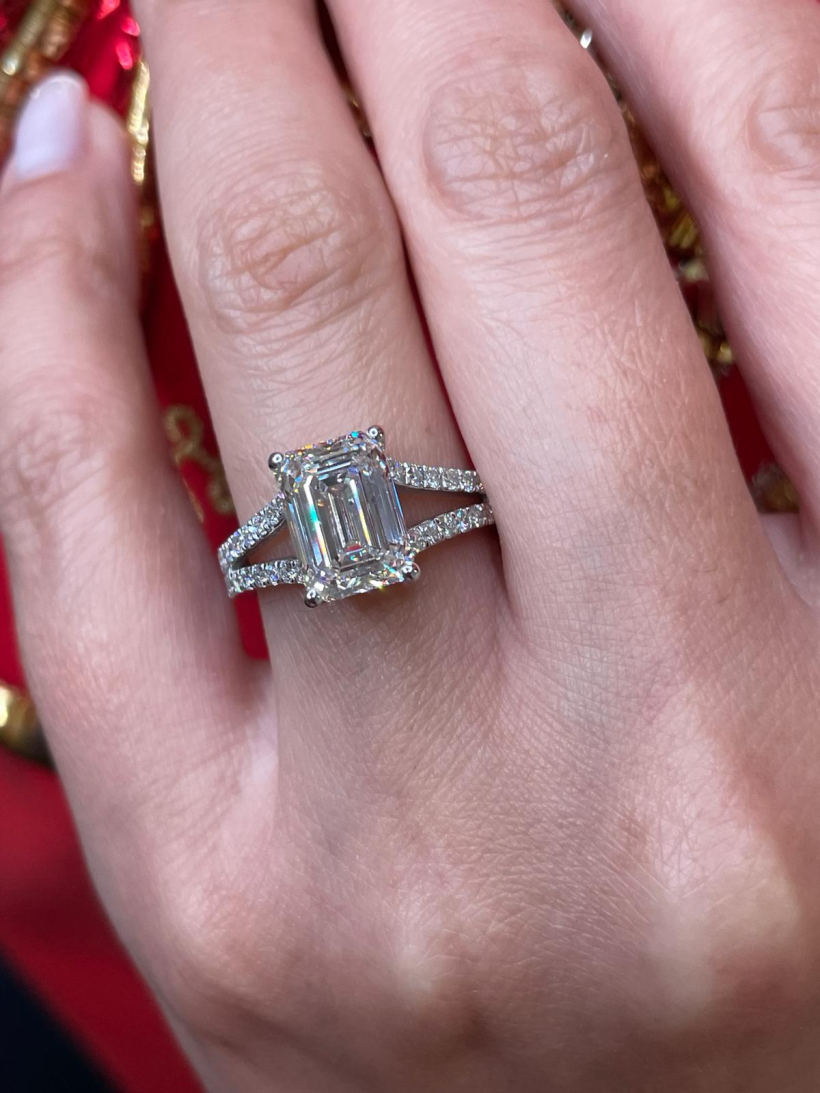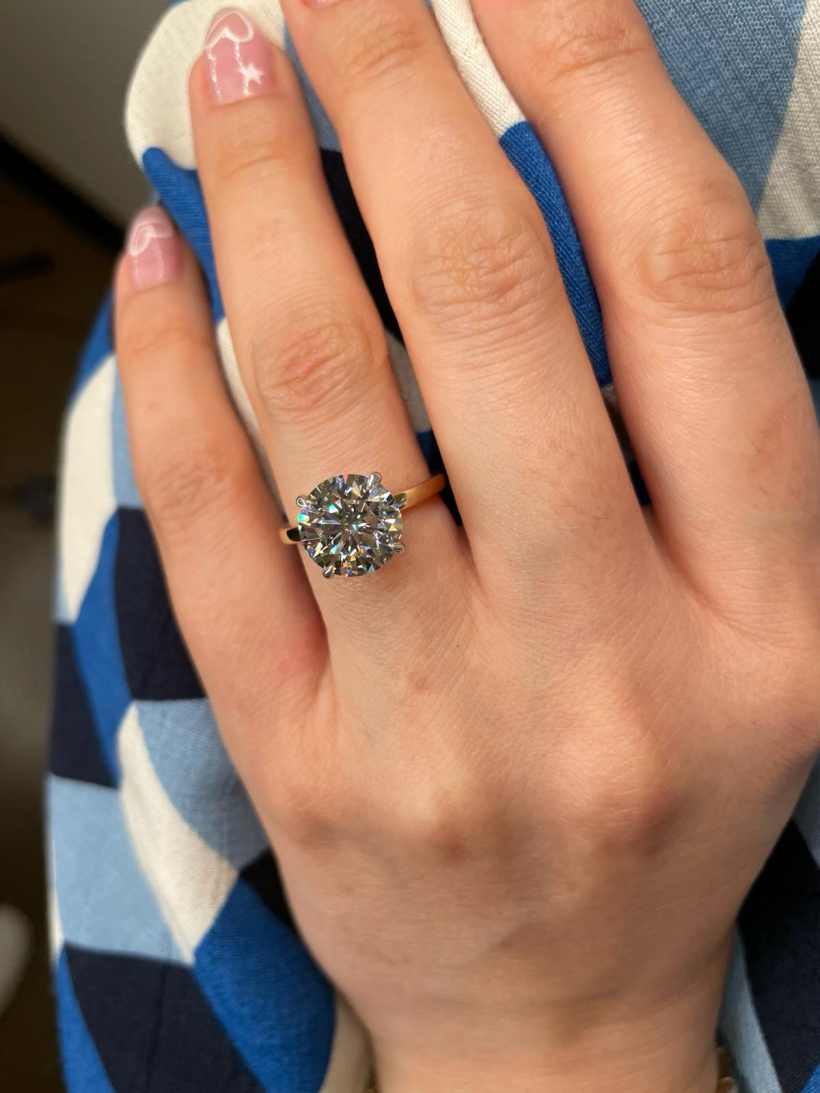Have you ever wondered how jewelers know if a diamond is real or fake? In years past, many jewelers simply looked at diamonds using magnification before coming to a conclusion. Today, technology has advanced to the point that jewelers (and everyday consumers) can test the authenticity of a stone in seconds with an electronic diamond tester. Moreover, our understanding of diamond properties has advanced, allowing many people to test diamonds at home with relatively simple methods.
In today’s guide, we’re going to look at how jewelers test diamonds, which methods work the best, and even how to test a diamond from the comfort of your own home. So, let’s get started!
How Are Diamonds Tested?
The easiest way to test a diamond is to take it to a trusted jeweler in your area. Many jewelers offer free testing and appraisal services. If you want to be 100% sure about a diamond’s authenticity, you can even seek out a graduate gemologist, like those who test diamonds for the Gemology Institute of America (GIA). While the exact methods may vary from one business or organization to the next, most professionals today rely on a combination of tests, including physical inspection with a jeweler’s loupe, high-profile weighing, and a thermal conductivity probe (also known as a “diamond tester”).
With a jeweler’s loupe, a diamond can be analyzed for inclusions (imperfections). While higher-value diamonds tend to have fewer inclusions, the complete absence of any inclusions is often a sign of a fake diamond. This method may help determine when a diamond is fake, but it cannot always guarantee that a diamond is real.
For this reason, professional testing may also involve the process of high-profile weighing. This requires a special scale capable of measuring the weight of gemstones in carats. Since real diamonds tend to have a lower weight than comparable fake diamonds, this method allows a gemologist to compare your diamond side-by-side with a fake diamond. If the two are exactly the same size, but the fake diamond is heavier, this provides strong evidence that your diamond is real.
Finally, many jewelers and gemologists rely on diamond testers. These devices can measure the authenticity of diamonds with much greater accuracy, as they measure thermal conductivity. Since diamonds have some of the highest levels of thermal conductivity of any known material, diamond testers are trusted more than most other testing methods.
How Does A Diamond Tester Work?
A diamond tester is a small, portable device with a tiny probe that resembles a needle. By placing the probe on a diamond, it can determine the thermal conductivity of the material in seconds. The resulting number, in turn, can be used to determine the diamond’s authenticity.
Thermal conductivity refers to the ability of a material to conduct or transfer heat. Since different types of gemstones can transfer heat at different speeds, a diamond tester is one of the best ways to determine if a diamond is real or fake. The diamond tester simply tests how quickly heat passes through the stone using Watts per meter-Kelvin (W/mK). The average measurement for real diamonds is approximately 2,200 W/mK. A reading that is substantially lower than 2,200 indicates a fake diamond.


Can You Test A Diamond At Home?
So, how can you tell if diamonds are real without a tester? Thankfully, there are various ways to test your diamonds at home, even if you don’t have access to a portable diamond tester. In the sections below, we’ll go over some of the most common and effective ways to test your own diamonds:
Water Test
To test a diamond with water, you’ll need a loose diamond (not fitted in a piece of jewelry). Simply fill a glass with water and then drop your diamond in the glass. If the diamond sinks, it’s likely real, and if it floats near the surface, it’s likely fake. This test works because real diamonds have a very high density, causing them to naturally sink in water.
Dot Test
The dot test is a very common way to see if a diamond is real based on how the stone bends light. All you have to do is draw a dot on a piece of paper. Then, place the diamond on top of the dot (make sure the paper is on a flat surface). When looking through the pointed end of the diamond, try to see the dot. If the dot is clearly visible, the diamond is probably fake, but if the dot is not visible, the diamond is likely real.
Fog Test
The fog test is a little more subjective, but it can still work as a fake diamond tester. To conduct the fog test, hold the diamond between two of your fingers and breathe on it. If the “fog” from your breath disappears almost immediately, then you likely have a real diamond, but if it takes a few seconds to dissipate, you likely have a fake diamond. However, the exact amount of time it takes for the fog to disappear may vary based on your environment, so this is not always a perfect testing method.
Light Test
When you hold your diamond near a light source, like a lamp, what do you see? With a real diamond, you should see a combination of bright, white sparkles and colored light. The former is often referred to as a diamond’s “brilliance,” while the latter is a diamond’s “fire.” In any case, if you don’t see a combination of both white sparkle and colored light, you might have a fake. The light test is even more subjective than the fog test, so try to use it in conjunction with another testing method for better results.
Multimeter Test
Similar to a diamond tester, a multimeter measures the electric current and resistance of a material. If you have one on hand, you can also use it to test the authenticity of your diamond. To test a diamond with a multimeter, simply place the probes of your multimeter on both sides of the diamond and change the device to the ohms setting (it may be called “resistance mode” or something similar). If the multimeter shows a reading of zero, then the diamond is likely real; anything other than zero indicates a fake diamond.
Does Moissanite Pass A Diamond Tester?
While diamond testers are a trusted tool, they are not without fault. Since moissanite looks very similar to diamonds, it is often used as a low-cost diamond substitute. To make it even harder to detect, moissanite has a thermal conductivity rate that is extremely close to the rate of natural diamonds. This can mean that, in some cases, a diamond tester may wrongly identify a moissanite stone as a real diamond. For this reason, many gemologists use both diamond testers and multimeters, as multimeters test electrical resistance, and moissanite has different electrical resistance rates than diamonds.
Do Lab Created Diamonds Test As Real?
You may wonder: do lab grown diamonds pass a diamond tester? The short answer is yes — lab grown diamonds will test as real diamonds. This is because lab diamonds have the exact same physical, chemical, and optical properties as natural diamonds. In other words, they look the same, they conduct heat and electricity the same, and they are both made of pressurized carbon. The only way for a gemologist to know if a diamond was made in a lab is to run tests that can detect nitrogen or boron. While nitrogen and boron impurities are almost always present in natural diamonds, they are never present in lab-made diamonds.
Looking To Sell Your Diamond Ring? Have Its Authenticity Verified To Get The Highest Price
If you’re currently looking to sell your diamond, you’ll want to make sure that it’s real. Fortunately, when you choose the HYSTR marketplace, we will test and appraise your diamond for you. This way, you won’t have to rely on imperfect home tests to determine your diamond’s authenticity and value. By getting your gemstone verified by our expert gemologists, you can get even more money whenever you’re ready to sell.
We hope you enjoyed our diamond testers guide! Are you currently trying to sell a used engagement ring? If so, be sure to contact HYSTR today!








